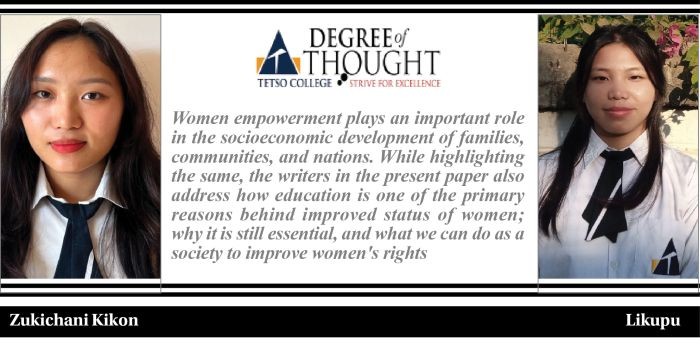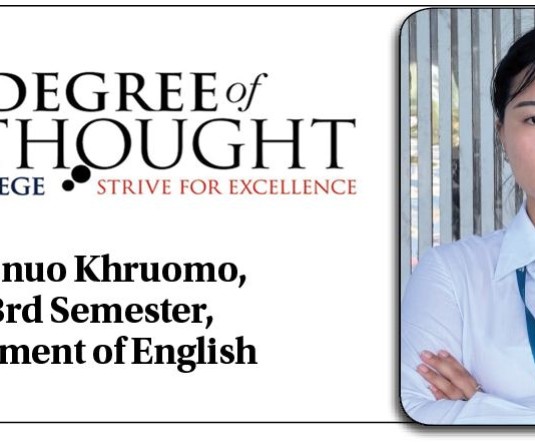
The term "women's empowerment" became popular after the 1980s. It refers to the process of strengthening women against various inequalities and discrimination. Women's empowerment may also be understood as women having the power and control over their own lives, knowing their own worth, making their own choices, being independent, and taking an active role in influencing social change for themselves and for others as well. It aids the ability to manage risk and improve women's well-being. When we look back in history, we see that women were regarded as a weaker section and, in many cases, treated as second-class citizens. They were often identified only as "homemakers" and associated only with household chores. However, in the 21st century, the position and role of women have relatively improved, and women today can be seen engaging in many other activities and working beyond the four walls of their homes. One of the main factors that have helped women improve their status is education.
Empowering women is necessary in all aspects, from health to the socio-economic development of families, communities, and countries. The idea of empowerment is also to include others who have been neglected in the decision-making process. Society has been undermining women for centuries and still is to this day. Our education has taught us that what the stereotypical society has normalized—women suffering silently—is not normal. Education has informed women of our rights as equal human beings, regardless of sex or gender, as well as our right to be treated as equals and to participate in decision-making that affects our lives.
Education is one of the most important factors in the overall development of an individual over a lifetime. Education trains one to face the challenges and difficulties of life through reasoning, understanding, and pragmatism. When a woman is educated, she is aware of her rights, she is more confident to make decisions for herself, and she is able to reach her full potential, thus contributing her skills to the workforce. She is able to rise in social standing and contribute to increasing sustainable economies that benefit societies and humanity at large.
In the context of the Nagas, formal education was first introduced in the Naga Hills by the western missionaries in the 19th century. At present, in Nagaland, women appear to be doing very well in academics. More women are enrolling in and graduating from higher education, as well as obtaining Masters and other advanced degrees. According to a study, the state of Nagaland in the year 2016–17 had four (4) universities: one (1) central and three (3) private universities. The report stated that the number of girls per 100 boys enrolled in primary, middle, and secondary schools has increased over the years. As per the 2011 Census, the literacy rate of males in Nagaland is 82.75%, while the female literacy rate is 76.11%.
In Nagaland, girls who receive education do not get married off at a young age, and women live a healthier and more productive life than they did in the past. They earn higher incomes, are well respected, and have their decisions valued more in their homes and workplaces as well. Education for girls has helped many women improve their standard of living and social status while also contributing to the economy of society as a whole.
Similarly, education has been a major agent in assisting women to become economically independent, as well as in bridging the gender gap in society. Educating women can thus help free women from the clutches of poverty, oppression, exploitation, and violence. Educated women can contribute to the economic condition of their homes and improve the standard of living for their families. Education enhances the social status of a woman as well as the status of her family. Hence, in a progressive society, men and women should be given equal access to education first.
Despite the government’s effort to bring up various schemes for the education of girls, for instance, Beti Bachao Beti Padhao, which aims to protect girls from social problems and promote education for girls, female literacy rates across India are still lower as compared to other nations. Comparatively, rural and tribal women are again found to have a lower ratio of being educated as compared to other women in the country. R. Victoria (2008), while emphasizing that women’s education should enable women not only to be good wives and mothers but to become career women and responsible citizens, and that each woman should have awareness of her rights and should have adequate opportunities to actively participate in social activities at the national level, added that "This could be achieved only through 100% female literacy."
While it has become crucial to empower women with the understanding that a nation cannot fully develop without empowering nearly half of its citizens, education is likewise seen as a factor that can help manifest this vision; however, unless all women, as observed by R Victoria, are educated, this may not materialize. It is therefore essential to ensure that access to education is possible for every girl child, and that education should not be limited to ensuring a woman’s source of income but be effective in implementing socio-political changes as well. Every citizen, regardless of gender, individual, organization, private, or government, has to promote and create an environment conducive to girls' education.
*The writers are 5th Semester students of Department of Sociology
Degree of Thought is a weekly community column initiated by Tetso College in partnership with The Morung Express. Degree of Thought will delve into the social, cultural, political and educational issues around us. The views expressed here do not reflect the opinion of the institution. Tetso College is a NAAC Accredited UGC recognised Commerce and Arts College. The editors are Dr Hewasa Lorin, Dr Aniruddha Babar, Khangpuiliu Pamei, Rinsit Sareo, Meren and Kvulo Lorin. For feedback or comments please email: dot@tetsocollege.org.






